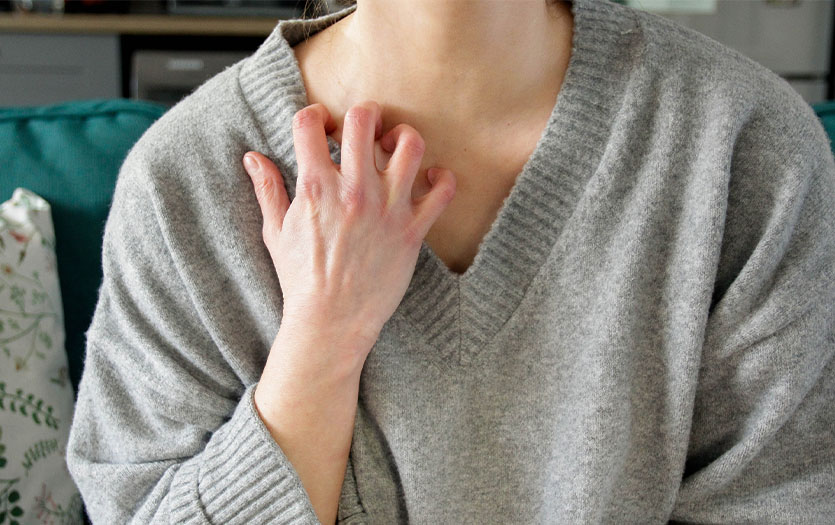
Psoriasis is a long-term (chronic) skin problem that causes skin cells to grow too quickly. We see this issue most often in adults, but children and teens can experience it, too. In this post, we’ll break down the symptoms and treatment options, as well as triggers those who suffer can avoid to reduce flare-ups.
Presentation
Fast-growing cells cause thick, white, silvery or red patches of skin, called plaques. Normally, skin cells grow gradually and flake off about every four weeks. New skin cells then grow to replace the outer layers of the skin as they shed. But with psoriasis, new skin cells move quickly to the surface of the skin in days rather than weeks. They build up and form thick plaques, which range in size from small to large. They most often appear on the knees, elbows, scalp, hands, feet or lower back.
There are several types of psoriasis. Symptoms for each type may vary, but the major presentations are:
- Raised, bright red patches of skin (plaques). They're often covered with loose, silvery scales, and appear on the knees, elbows or low back.
- Tiny areas of bleeding when skin scales are picked or scraped off (sign of Auspitz's psoriasis).
- Mild scaling to thick, crusted plaques on the scalp.
- Itching, especially during sudden flare-ups or when the plaques are in body folds, such as under the breasts or buttocks.
- Discolored or pitted nails.
Other symptoms may include:
- Similar plaques in the same area on both sides of the body.
- Flare-ups of many raindrop-shaped patches (sign of guttate psoriasis).
- Joint swelling, tenderness and pain (sign of psoriatic arthritis).
- Psoriasis plaques that appear after an injury, such as a cut, burn or too much sun.
Symptoms may disappear (go into remission) even without treatment, and then return (flare-up).
Causes
The exact cause of psoriasis isn't known, but experts believe that the immune system overreacts, causing inflammation and flaking of skin.
Many scientists believe that psoriasis can be inherited, meaning it runs in the family. Certain gene changes can make it more likely for a person to get psoriasis, but it isn't clear if genes alone determine the presence of the condition.
Psoriasis isn't contagious. It can't be spread by touch from person to person.
Avoiding triggers
People with psoriasis often notice times when their skin gets worse. Learning what triggers to avoid can improve symptoms or help reduce the number of psoriasis flare-ups.
Triggers to avoid include:
- Cold, dry climates. Cold weather may make symptoms worse. Hot, humid weather and sunlight may improve symptoms for some, though it can make it worse for others.
- Scratching and picking at your skin. Also avoid skin injuries (cuts or scrapes). An injury to the skin can cause psoriasis patches to form anywhere on the body, including the site of the injury. This includes injuries to your nails or nearby skin while trimming your nails.
- Infection. Infections such as strep throat can cause one type of psoriasis (guttate psoriasis) to appear suddenly, especially in children.
- Stress and anxiety. Stress may cause psoriasis to appear suddenly (flare-up). Or it can make symptoms worse, although this has not been proven in studies.
- Smoking. Smoking can make your symptoms worse. If you smoke, consider quitting.
Treatment
Most cases of psoriasis are mild. Treatment starts with skin care. This includes keeping your skin moist with creams and lotions. These are often used with other treatments including shampoos, ultraviolet light and medicines your doctor prescribes. You may need to try different combinations of treatments to find what works for you.
Copyrighted material adapted with permission from Healthwise, Incorporated. This information does not replace the advice of a doctor.



